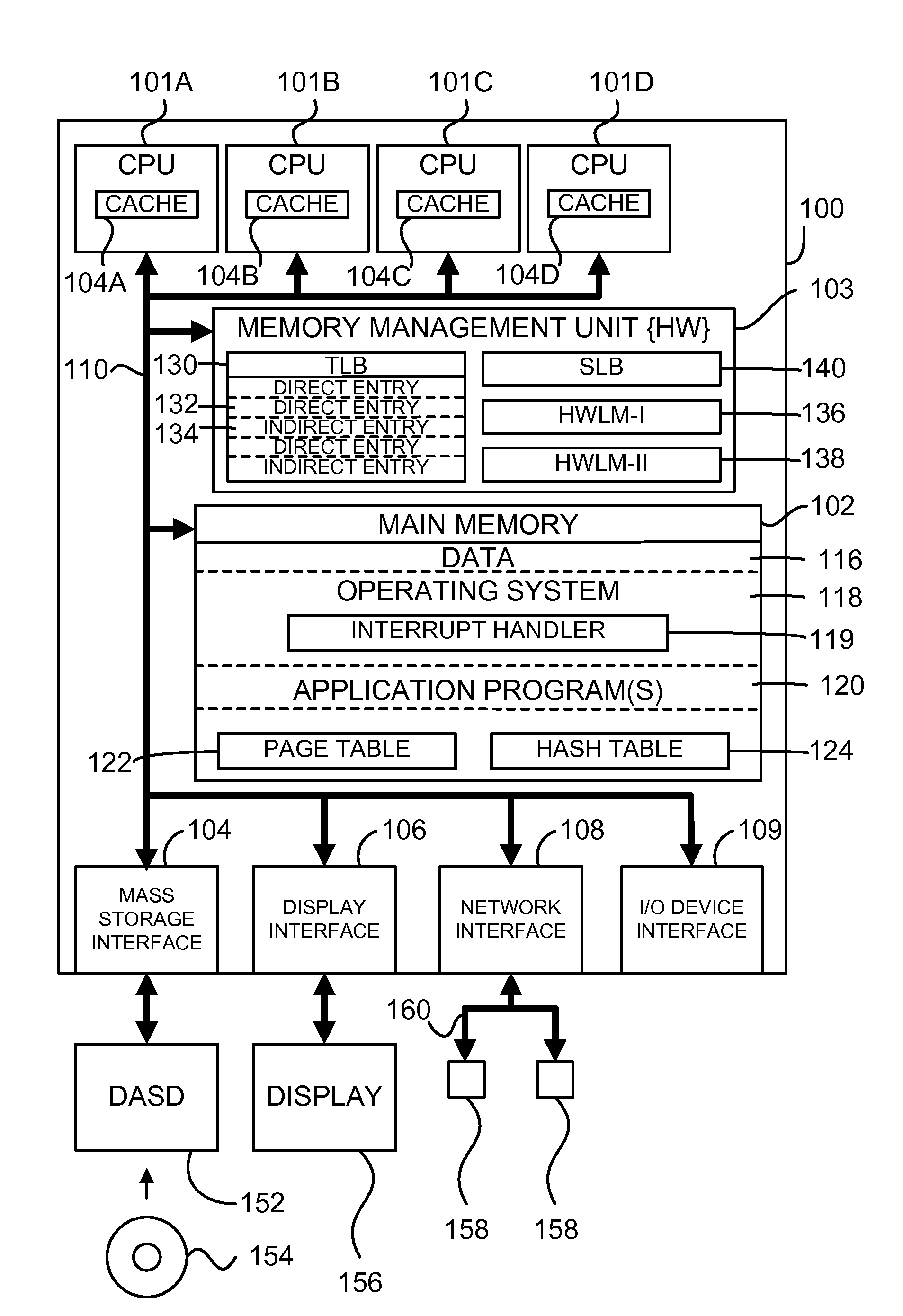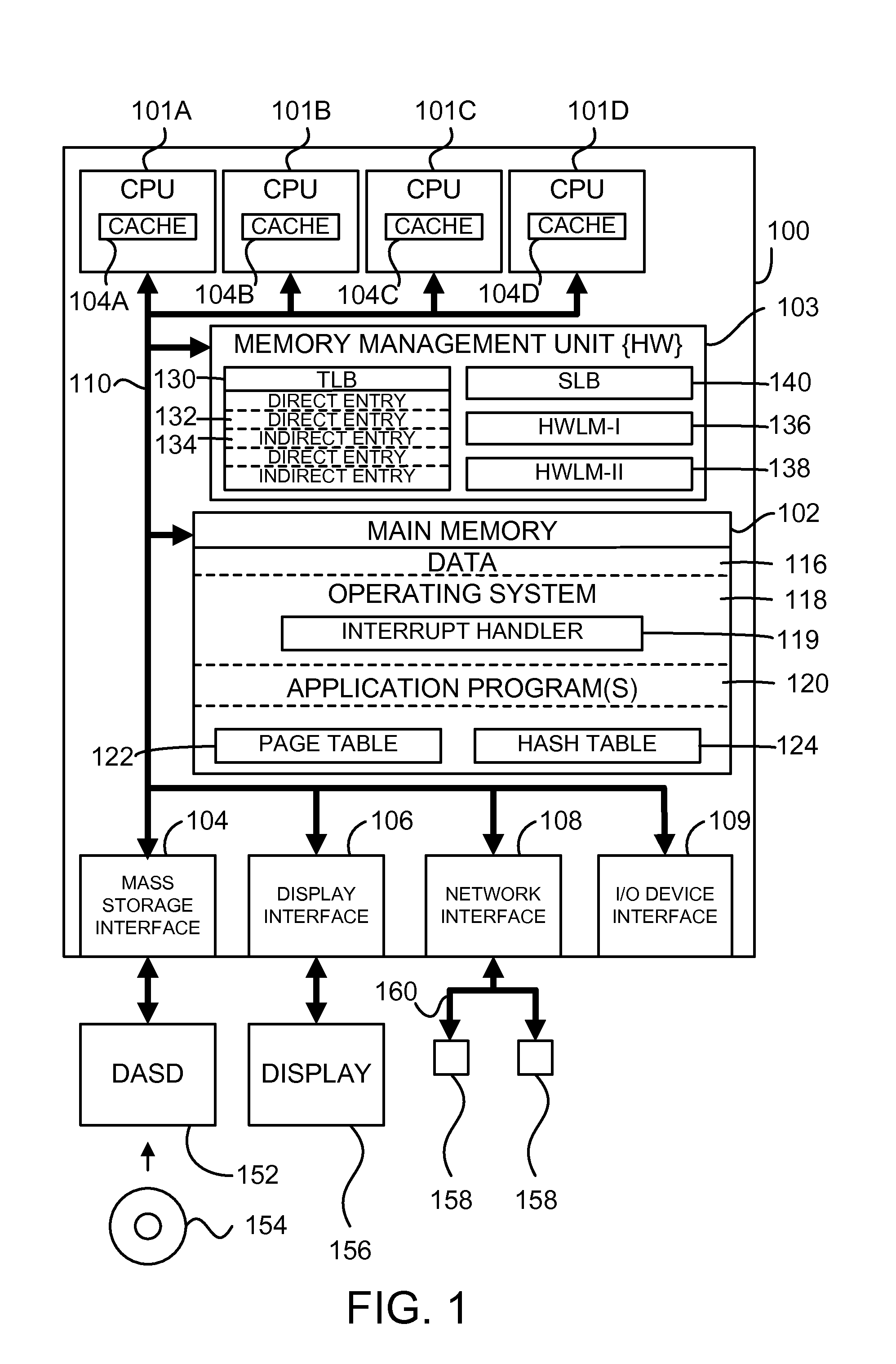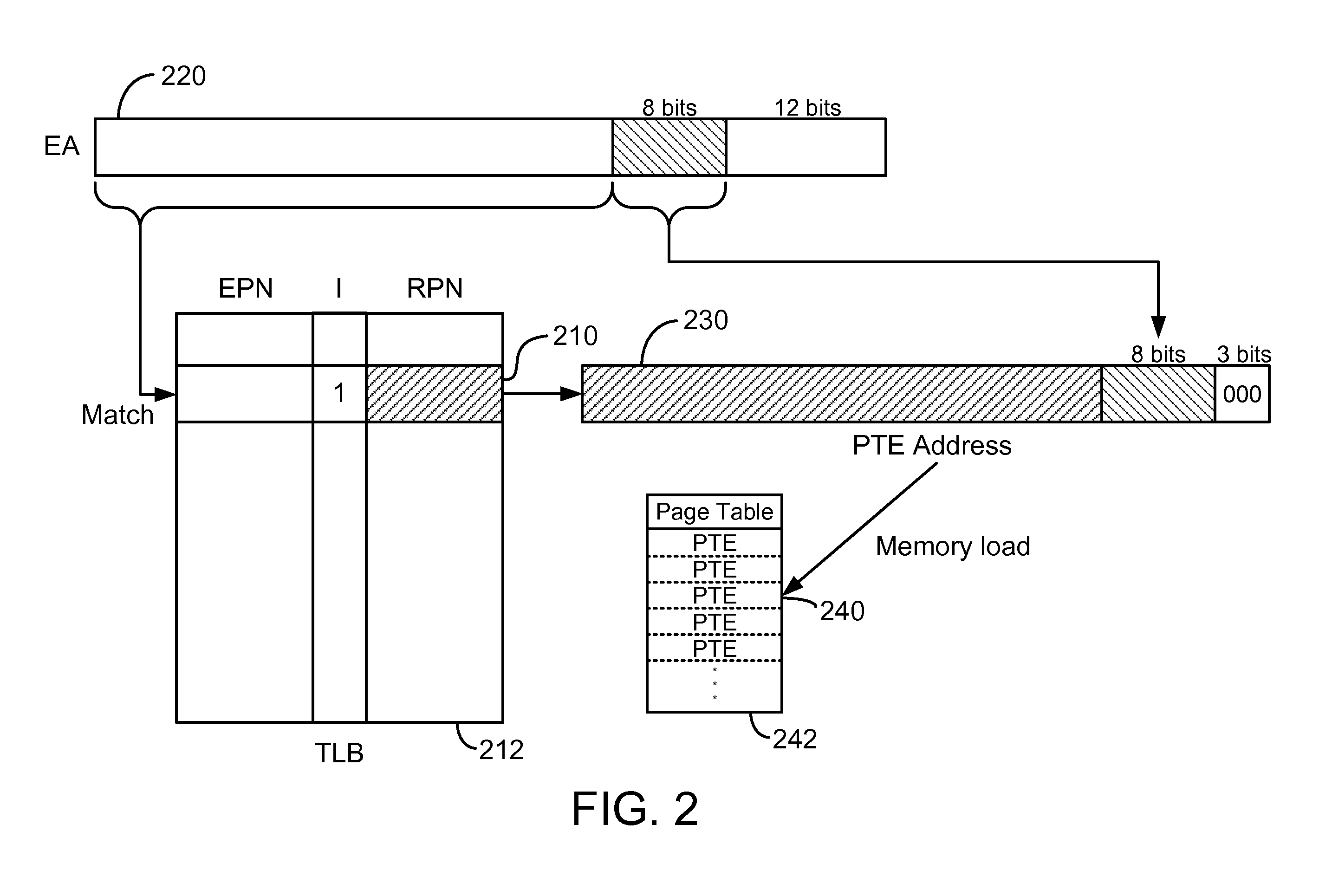Loading entries into a tlb in hardware via indirect tlb entries
a technology of indirect tlb and hardware, applied in the field of digital data processing, can solve the problems of increasing the complexity of the system, affecting the performance of embedded processors with software loaded tlb, and consuming a great deal of system clock time, so as to reduce the capacity pressure of the tlb, reduce the extra area and power associated, and eliminate the effect of extra space and power
- Summary
- Abstract
- Description
- Claims
- Application Information
AI Technical Summary
Benefits of technology
Problems solved by technology
Method used
Image
Examples
Embodiment Construction
1.0 Overview
[0038]In accordance with the preferred embodiments of the present invention, an enhanced mechanism for loading entries into a translation lookaside buffer (TLB) in hardware via utilizes indirect TLB entries. If no direct TLB entry associated with the given virtual address is found in the TLB, the TLB is checked for an indirect TLB entry associated with the given virtual address. Each indirect TLB entry provides the real address of a page table associated with a specified range of virtual addresses and comprises an array of page table entries. If an indirect TLB entry associated with the given virtual address is found in the TLB, a computed address is generated by combining a real address field from the indirect TLB entry and bits from the given virtual address, a page table entry (PTE) is obtained by reading a word from a memory at the computed address, and the PTE is loaded into the TLB as a direct TLB entry.
[0039]In one embodiment, if no indirect TLB entry associated w...
PUM
 Login to View More
Login to View More Abstract
Description
Claims
Application Information
 Login to View More
Login to View More - R&D
- Intellectual Property
- Life Sciences
- Materials
- Tech Scout
- Unparalleled Data Quality
- Higher Quality Content
- 60% Fewer Hallucinations
Browse by: Latest US Patents, China's latest patents, Technical Efficacy Thesaurus, Application Domain, Technology Topic, Popular Technical Reports.
© 2025 PatSnap. All rights reserved.Legal|Privacy policy|Modern Slavery Act Transparency Statement|Sitemap|About US| Contact US: help@patsnap.com



